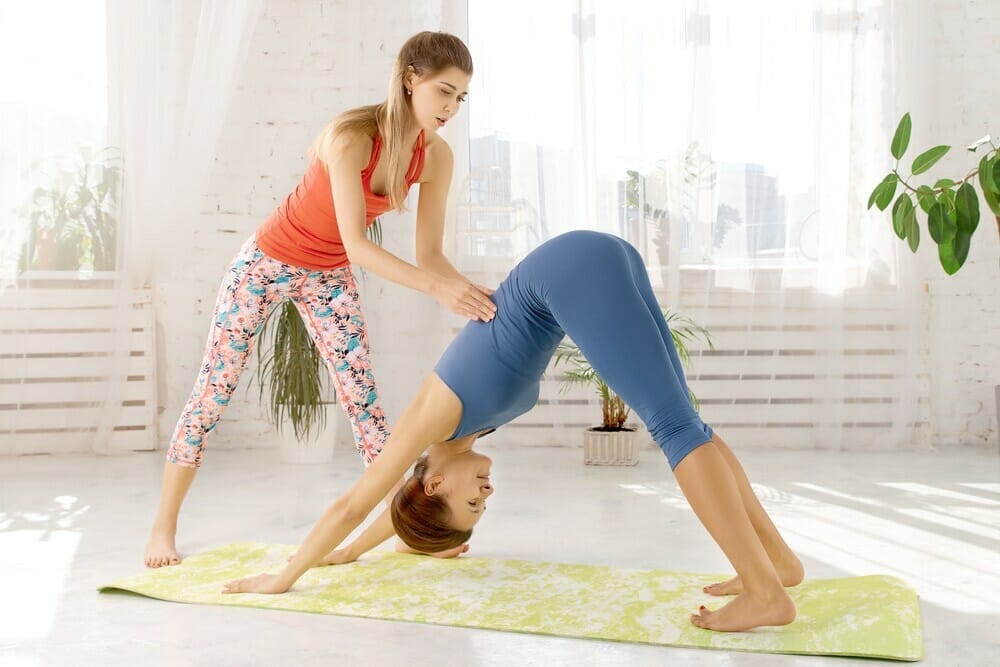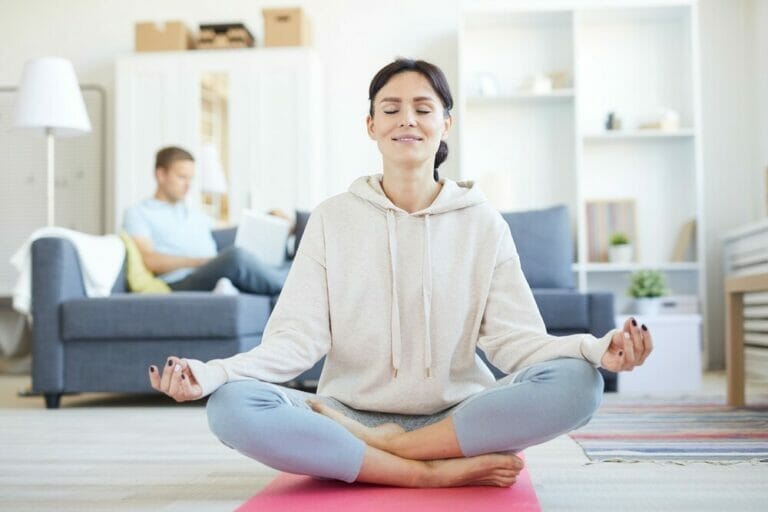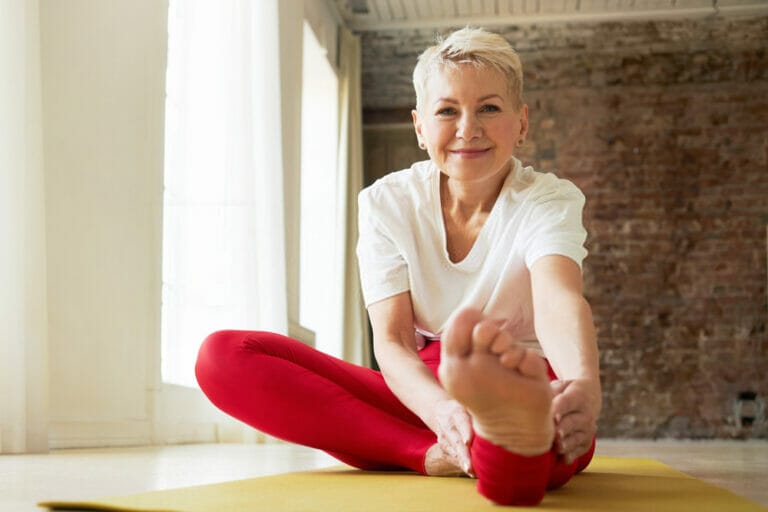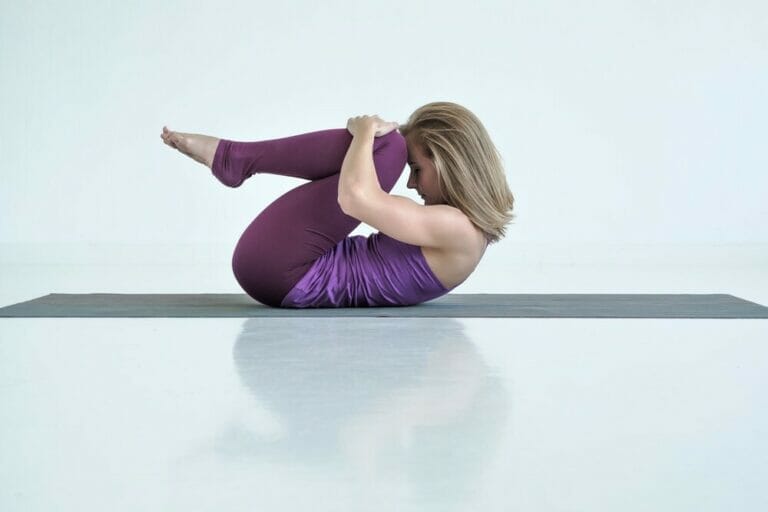Yoga Poses For Beginners Learning To Balance
Poses of balancing are fascinating. These Asanas not only restore physical equilibrium and proper posture, but they also teach us how to stay grounded and balanced even when life throws us curveballs.
Meanwhile, if our core muscles are weak or under a lot of stress, these postures may be a little challenging.
So, how can we put these into practice? Here are seven beginner-friendly balancing positions that are basic but powerful. Until you learn the positions, use objects, chairs, walls, or a strap wherever necessary.
What are the benefits of balancing poses?
Some yoga exercises help us become more stabilized and balanced. In addition, they help us adapt to unexpected situations that we may encounter in our daily lives.
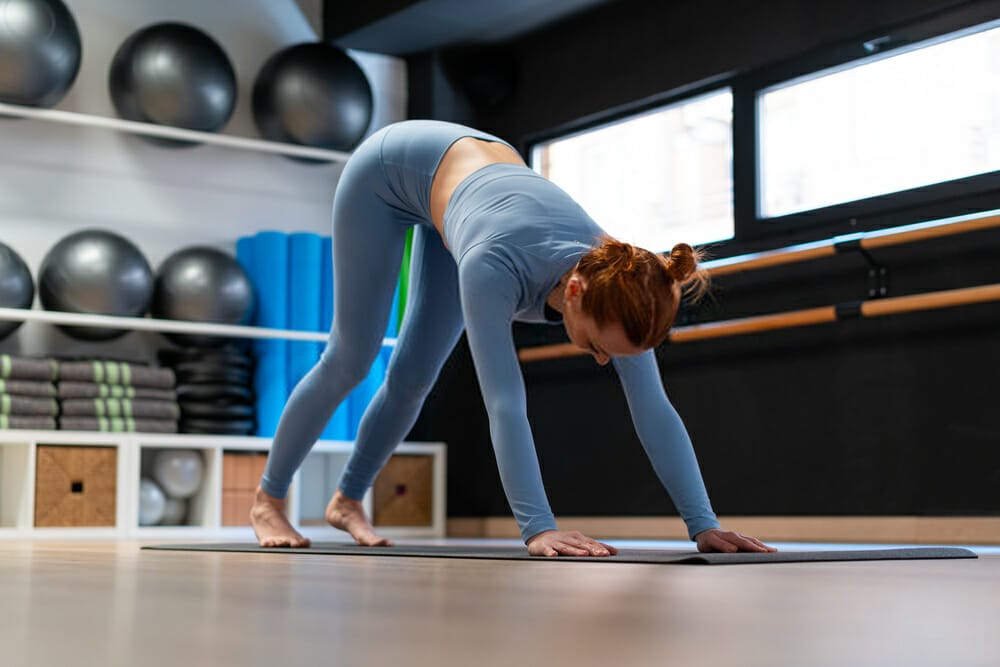
Physical Benefits
Yoga’s balancing postures are beneficial to both our physical and emotional wellbeing. They assist us in aligning ourselves, strengthening and lengthening our muscles, and exploring the centre of gravity in our bodies.
In addition, you can improve the function of the body's equilibrium receptors by practising balance postures regularly.
These are positioned in the inner ear’s vestibular system and give the body information to maintain balance.
In our bodies, we have two types of equilibrium receptors: dynamic and static. The emotional equilibrium receptors respond to motions such as rotation, acceleration, and deceleration by providing information about the location of the body.
On the other hand, the static equilibrium receptors detect the body’s position concerning gravity, such as whether we’re standing or lying down.
Mental Benefits
However, standing on one foot is only one aspect of having a solid sense of balance. Yoga balancing postures help us discover mental and emotional equilibrium in addition to physical stability.
In a balancing position, staying stable and centred enhances attention and reduces tension. It would be best if you remained focused and attentive while attempting not to fall over. You must learn to ignore external stimuli to stay steady and motionless for an extended period.
As a result, balancing yoga postures are an excellent method to stay intellectually and emotionally intense, especially in stressful times.
It is why balance postures are beneficial both on and off the yoga mat. They provide you with the ability to face life with patience, serenity, and awareness.
Let us now look at yoga poses that will help you develop balance.
Tadasana – Mountain Pose
Tadasana appears easy, but it’s pretty challenging and effective in developing mind-body synchronization. Only by standing on your toes and closing your eyes will you get the benefits of the position.
Stand with your feet wide apart—Tuck the pelvis in a while, straightening and lengthening the spine. Pull the navel close to the spine to activate the core muscles.
Place your palms on the outside of your thighs. Roll the shoulders down, bringing the shoulder blades together as much as possible.
Swing your arms above your head and extend your body as you inhale. Firmly press the soles of the feet into the ground. Here, take six to seven deep breaths—Namaste by bringing your palms together at the heart centre.
Close your eyes and concentrate your concentration on the area between your brows.
Utkatasana – Chair Pose
For beginners with a weak core, the Chair Position is an excellent balance pose.
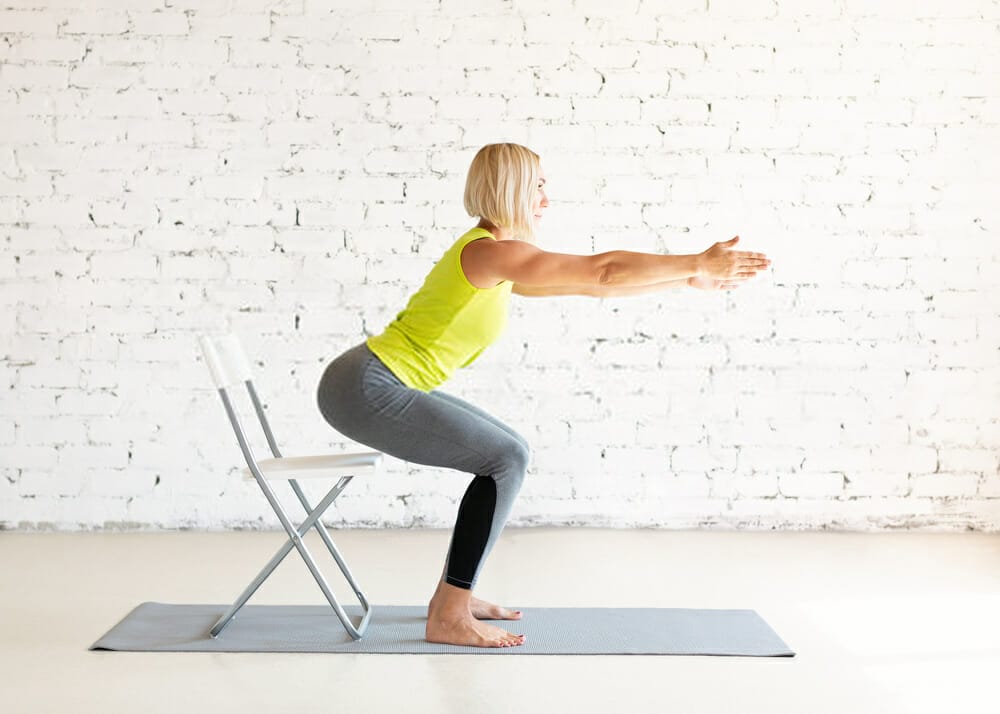
Standing upright with your feet together is a good idea. Align the spine with the head and neck by lengthening it.
Pull the navel up and close to the spine to activate the core muscles, and tuck your tailbone in. Next, roll the shoulders down, bringing the shoulder blades together as much as possible.
Lean forward slightly so that your body and thighs form a 45-degree angle. Stack the knees higher than the ankle.
Thighs should ideally be parallel to the floor. Adjust the alignment such that the knees are directly above the ankle.
Viparita Virabhadrasana – Reverse Warrior Pose
It is a crucial balancing position that improves body-mind coordination. You may practice it against a wall until you’re comfortable with it.
Place your feet together and take a deep breath. Keep the right foot about 3 feet away from the left on an inhale. Turn the right foot inward slightly, forming a 45-degree angle with the floor. Exhale.
Lift the arms to shoulder level and parallel to the floor, palms towards the ground on the next breath. Spread your fingers as wide as possible. Roll your shoulders back and away from your ears.
Bend your left knee and stack it over your right ankle. Reduce hip circumference and extend the spine. Allow the shin to form a 90-degree angle with the floor so that the left thigh is parallel to it.
Hips should be squared to the right side—Tuck in your tailbone. Suck the navel to the spine by using the abdominal muscles.
Lower your hips while opening your left knee to your left little toe. Hold the position for a total of five breaths.
Rest the right palm on the right calf muscle on the sixth inhalation. Lift the left arm to the ceiling at the same time, and fingertips pointed to the top. Experiment with a slight backbend, moving the right palm down towards the ankle.
Chaturanga Dandasana – Four Limbed Staff Pose
This asana benefits the entire body. It is an excellent position for balance that tones and strengthens the whole body.
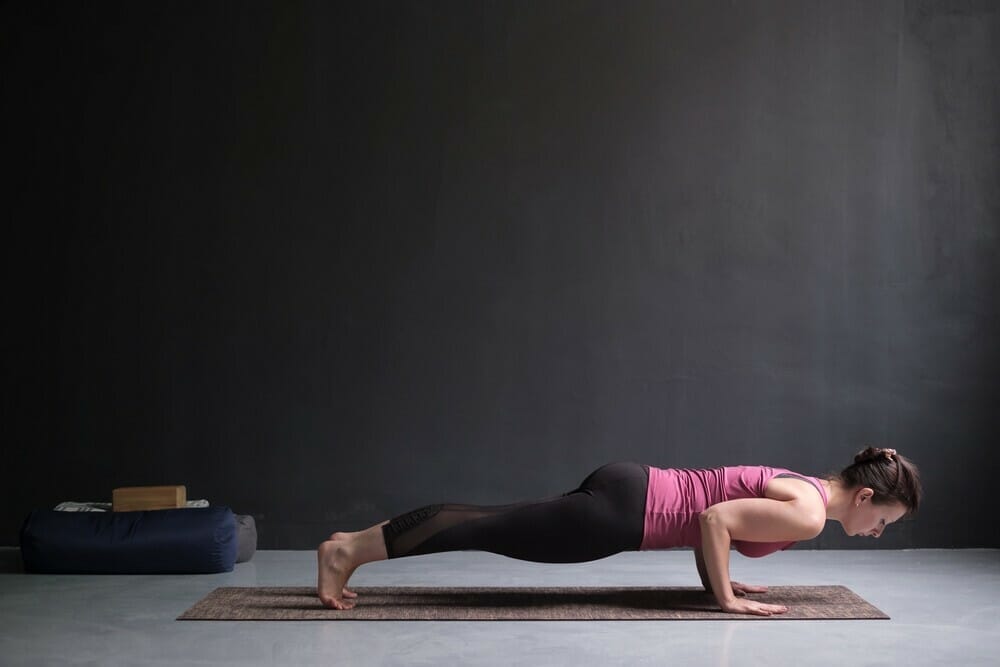
Stand tall with your feet together. Stretch the spine and line it with the head and neck. Pull the navel up and close to the spine to activate the core muscles.
Tuck your tailbone in. Roll the shoulders down, putting the shoulder blades as close together as possible.
Fold forward and rest your palms firmly on the floor as you inhale. Achieve a Plank by walking or jumping backwards.
Exhale and carefully drop your body to the floor, bending your elbows back—Tuck your toes. Activate the buttocks, core, and thighs. In the last recumbent position, the entire body should come parallel to the floor.
Dandayamna Bharmanasana – Balancing Table Pose
The following balancing posture for beginners is the table pose. The name of the posture tells you all you need to know about it.
Physically, it strengthens the core. In addition, it teaches body-mind synchronization and balance on a metaphysical level.
Come to all fours, hips stacked over knees. Align the shoulders and wrists. Pull the navel up and close to the spine to activate the core muscles.
Roll the shoulders down, putting the shoulder blades as close together as possible. Extend your feet with your toes facing backwards.
Inhale and raise your right leg parallel to the ground. Allow the back toes to stretch for the back, lift the left arm, fingertips facing front, inhaling.
Take three deep breaths and hold the position. Next, close your eyes and concentrate on the place between your brows. Continue to keep for the following nine breaths.
Exhale and let go of the left arm. Inhale and lower the right leg to return to table posture.
Garudasana – Eagle Pose
For novices, the Eagle Position is a beautiful balance pose. Practice the posture against a wall or place the upper leg’s toes on the floor until you find your balance.

Stand tall with your feet together. Stretch the spine and line it with the head and neck. Pull the navel up and close to the spine to activate the core muscles.
Tuck your tailbone in. Roll the shoulders away from the ears and down, putting the shoulder blades as close together as possible.
Inhale and place your palms on your waist. Exhale, bend your knees and push your hips back to form a half squat.
Extend your arms parallel to the floor forward. Swing your left elbow over your right. Bend the elbows to make contact with the backs of the hands.
Try to connect your hands as if you were saying a Namaste. If you have a shoulder or wrist injury, don't do this. In such circumstances, do a Namaste.
Cross the left knee across the right while balancing on the right leg. Hook your left ankle around your right calf.
Tuck the pelvis in, contract the abdominal muscles and keep the spine straight. Sit back further, keeping your attention fixed on a spot in front of you.
Tree Pose – Vrksasana
One of the first one-legged standing balancing postures that yoga practitioners learn is the tree pose.
Because you can't stand still while your mind is racing, instability and lack of attention can convert this yoga balance posture into a reflection of your inner condition.
Begin in Mountain position. Shift your weight into one leg, keeping your inner foot planted on the floor. It is going to be your standing leg. You may also practice standing on one leg against a wall if you feel unsteady.
Raise the opposite leg and bend the knee. Then, with one hand, reach down and grab your ankle. With the toes facing down, place the sole against the upper thigh of the standing leg.
If you are unable to raise your leg this high, you can position it further down. Please take care not to place it directly against the knee.
Instead, bring it above or below the knee joint. Next, squeeze the raised foot into the standing leg's femur bone, and vice versa.
Stretch your spine down toward your knees and up through the top of your head from within your ribs. Then, softly focus your attention on a fixed place on the floor in front of you. You can raise your arms aloft once you feel stable.
Tips to improve balance in yoga poses
- Fix Your Gaze: Stabilize your balance by focusing your gaze on a fixed point across the room. It could be anything—a tree, a painting, or even the corner of the room.
- Take Fewer Breaths: If you are having trouble balancing, take fewer breaths to stabilize your balance in yoga poses. Breathing is one of the ways that destabilize our position, especially while holding inverted poses for beginners like Crow Pose or Seal Pose.
- Meditate: To calm and steady your mind, gently focus on a mantra-like “om.”
- Stand Tall: When taking beginner postures, stand tall and keep your shoulders away from the ears to prevent them from pulling down.
- Narrow Your Base: Your base must be narrow and steady to prevent you from falling forward or backward in yoga poses like Tree Pose or Hydra Pose, which uses the core muscles to balance and control the body’s position.
- Get Some Support: For the first few tries, support yourself with a wall or a chair. It will help you keep your balance in yoga poses.
Conclusion
In the end, yoga is a beautiful way to make peace with your body and mind. However, to feel—and be—balanced, you must learn to be grounded in the earth and calm in your mind. The postures presented here are among the first that yoga students learn, but they will never benefit.
As you begin practising yoga, take your time in learning the postures. Choose asanas that are right for you, but keep them simple.
Don’t try to incorporate advanced postures immediately. Instead, focus on learning the basic postures of yoga for beginners before moving on to more advanced poses. As you continue practising, you will build your confidence and become more flexible.
I hope you enjoyed reading this post! Let me know If these poses helped you in improving your balance!

